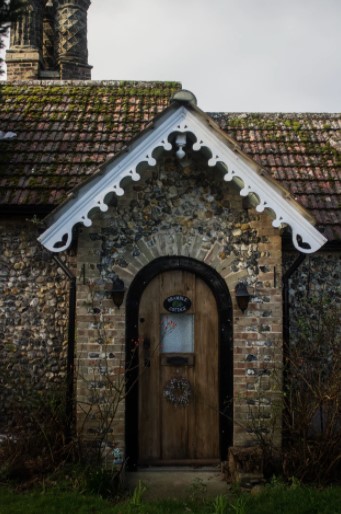
Outdoor Tiles: How To Pick The Best Ones
You find the perfect tile for your patio: beautiful, sleek, and just the right color to complement the flowers in your garden. Then, you slip as soon as you step over it. The criteria for picking outdoor tiles is not one you should base on appearance only. But many people go into it without knowing what tile shopping exactly entails.
That’s why we’ve collected all the tips and tricks in this article. Now you can make the best, informed choice the next time you purchase outdoor tiles.
Outdoor Tiles: How Are They Different From Indoor Tiles?
When they talk about outdoor tiles, a common question our customers have is: why can I not use the types of tiles I have in my home already?
The answer is that indoor tiles are less durable than outdoor tiles. They are usually more porous and prone to cracking. Unlike tiles built for gardens and patios, they are more slippery as well.
Inside the house, that’s fine due to the indoor use of shoes. And most often, these tiles are for use in the bathroom. So, it’s not an issue that they are slippery.
However, outside, the materials have more exposure to the elements. When you have a beautiful garden, you expect your kids and pets to be able to run free and enjoy the fresh air. Having the right friction to grip their movement is a must. So, parents and pet owners need to pick slip-proof materials.
4 Attributes & Rating Systems To Pick The Perfect Outdoor Tiles
What makes an outdoor tile an outdoor tile, you ask? The best outdoor tiles will stand firm against the elements, be safe for your living conditions, and suit your needs. All this, without compromising the beauty!
So, let’s get an in-depth view of the factors and ratings that can help you choose:
Durability
As we highlighted earlier, durability is the top feature determining how tiles are suitable for the outdoors. They need to be able to withstand the patter of rain and the heat of the sun.
How much pressure they have to handle is also a factor here. Think about your family members and the people that will frequent your patio.
An elderly couple, who only want to use the patio for a nice cup of tea, won’t need to bother looking for heavy-duty materials. On the other hand, a family with young children needs to select both and stain-resistant materials.
Materials like porcelain and wood are durable. Some stronger natural stones like slate and travertine also do the trick, though they tend to be slippery. Try and avoid highly porous materials like limestone.
Check the wear ratings of your selected material for a better idea of usage. Porcelain and ceramic have a specific rating system called PEI that tests for hardness and durability. A rating of 4-5 is suitable for heavy wear.
Slip Resistance
Slip resistance is the next significant factor you need to consider. Outdoor walls don’t require a lot of slip-proofing. Rough textures are necessary for pavements and patios or areas where you’ll be walking a lot.
Wood tiles have that texture. In terms of natural stone tiles, you can use slate, a common material for outdoor patios. And you can get by granite and some others if you seal it regularly/ Highly polished tiles are the ones you should avoid here. Textured porcelain or ones with a matte finish will be your best bet.
In Australia, the prime ways we test slip ratings is through a P rating (pendulum test) and an R rating (ramp test). The P ratings P4 and P5 are considered low-risk classifications, making it ideal for outdoor tiles.
There are two kinds of ramp tests for tiles, oil-wet ramp and barefoot wet ramp.
An oil-wet ramp test (R9 – R13) measures the degree of the angle of the slip resistance. The least risk classifications are R12 and R13.
A barefoot weight ramp test (A, B, C) also measures the degree but is geared more toward testing for use around swimming pools. For this test, a ‘B’ rating means there’s a ‘moderate’ risk. A ‘C’ rating is optimal as it indicates a ‘very low’ risk.
Water Resistance
When you’re choosing outdoor tiles for your poolside or when you have a water fountain in your garden, you need to consider your material’s ability to withstand it. The same goes for pet owners and parents.
Some harder natural stones have intrinsic water absorption properties. For example, granite. Yet, they still need covering with a water-resistant sealant for use. Especially near a pool, it’s unnegotiable.
Porcelain tiles, on the other hand, have this glaze that works like a shield. It comes from the process of production. They’re fired in a kiln, which makes all of the water inside evaporate. The result is a hard and dense clay perfect for outdoor use.
For a measure of water resistance, you can check a rating system developed by the American National Standards Institute (ANSI). A water absorption rating of vitreous (between 3 and 0.5%) and a rating of impervious (less than 0.6%) is the standard for outdoor tiles.
Variation in Appearance
Since you will be the one picking outdoor tiles that catch your eye, we won’t bore you with the details. Besides picking between the swirls of marble or the sleekness of granite, you need to consider how you will be positioning the tiles.
A tile variation test exists for this reason. It shows you how uniform a batch of outdoor tiles is.
If you want the same look throughout, go for ratings of V0 (very uniform appearance) and V1 (uniform appearance). For patterned tiles with minimal or some difference in textures and tones, ratings V2 and V3 indicate slight to moderate variations. Finally, a rating of V4 means substantial variation. It’s best suited for an artsy and unique design.
Conclusion
Outdoor tiles are the best accessory to your patio. When buying one, you should consider it’s performance as well as it’s beauty.
Let us know if this article made tiles shopping more comfortable for you in the comments below!
Do you want to learn more about how outdoor tiles can improve your garden design? Click here to learn more.
Can’t choose a suitable landscaping company? Check out our guide on picking the perfect one here.


Recent Comments